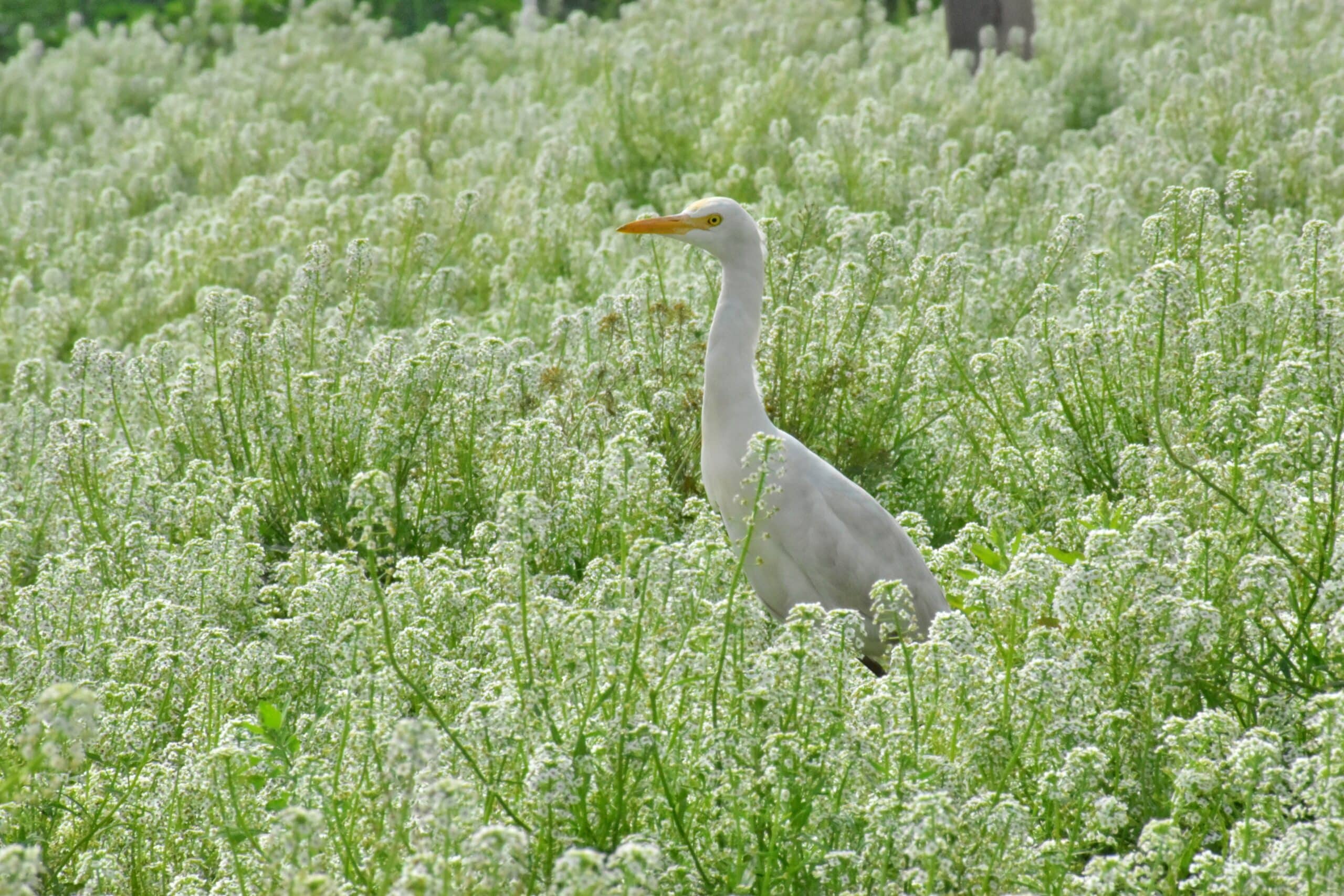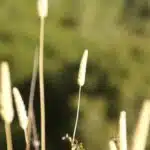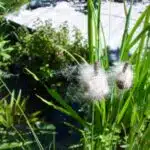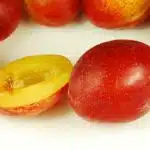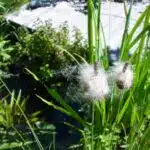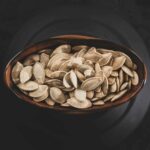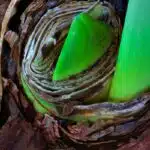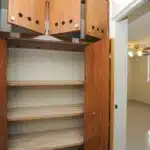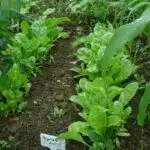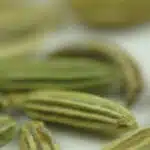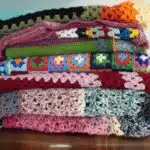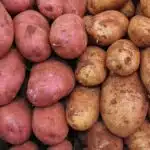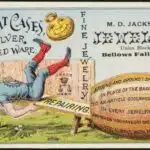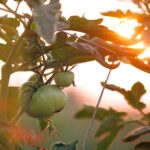Do you have a green thumb? If so, you understand the hard work and dedication it takes to grow a garden. But when it comes time to harvest your crops, have you ever considered saving some of those seeds for next season? Storing seeds from your own personal garden is like putting money in the bank – it helps ensure that you’ll be able to maintain your bountiful harvests year after year. Here’s the deal – if you want to reap the rewards of storing your own saved seeds, there are some key steps that need to be taken. Read on like a gardener digging up secrets as we explore 6 tips for storing seeds saved from your own garden!
When it comes to gardening, many people think they simply need soil and water to get started. However, having an understanding of how the seed-saving process works is just as important! Saving and storing seeds successfully requires knowing which ones can be kept, when they should be harvested, and how they should be stored properly. Keeping these seeds viable for future harvests will help maintain continuity in your garden and make sure that all of that hard work doesn’t go to waste.
So if you’re ready to take control of your garden’s destiny by mastering the art of seed-saving, then let’s get started! We’ll share with you our top 6 tips for keeping those precious little gems safe until next season rolls around. With a little know-how and careful consideration, those seeds can last for years – so don’t wait another minute; let’s start planting the seeds (pun intended) for success!
Choose The Right Seeds To Store
Storing seeds is like putting away pieces of a jigsaw puzzle for future use. It’s important to be thoughtful and careful when it comes to selecting the right pieces, as well as organizing them in the correct way. The first step in this process is to choose the right seeds to store.
When picking out your seeds, look for ones that are still in good condition. If it’s a seed you grew yourself, make sure you harvested it properly and gave it time to dry out completely before storing it. Additionally, check for any signs of disease or damage and discard any that have been affected by pests.
It’s also best to stick with varieties that have a high germination rate. That means they should sprout easily when planted, so you won’t be wasting time and energy on trying to get them to grow once they’ve been stored away. To ensure this, only save viable seed from plants that have done well in your garden and are adapted to your local climate. Spending some time researching which types of plants will do best in your area can really pay off when it comes time for storing seeds.
Onward then, to cleaning and drying the seeds…
Clean And Dry The Seeds
It may seem obvious to many of us that one should clean and dry seeds before storing them, but the truth is that this process has a much more important purpose than just keeping a plant’s seed neat and tidy. Cleaning the seed removes any residue from its natural environment, such as soil or other organic matter, which can attract harmful insects or mold. Drying the seed further ensures that it won’t rot in storage, providing for a longer shelf life.
The best way to clean and dry seeds is to start by rubbing each one between two paper towels or cotton cloths until all dirt and debris have been removed. Next, spread out the seeds on a cookie sheet lined with paper towels and allow them to air-dry for 1-2 days before putting them away in an airtight container. It’s also important to note that over-drying can kill some types of seeds, so be sure not to leave them out too long!
Finally, make sure you label each container with the type of seed inside and the date it was stored. This will help you keep track of when they were put away and how long they’ve been sitting in storage. With these steps taken care of, we can now move onto preparing containers for storing our saved garden seeds!
Prepare Containers For Storing
Once the seeds are clean and dry, it is time to get them ready for storage. There are several options available for preparing containers for storing the seeds. Mason jars with airtight lids work well and can be found in many sizes at most stores. Plastic bags or envelopes are a good alternative if you don’t have any glass containers handy. Both of these options should be clearly labeled so that you know what type of seed is inside.
When filling either the mason jar or plastic bag, make sure that the container isn’t filled too full as this could cause damage to the seed when it’s moved around. If you’re using envelopes, use paper ones rather than plastic so that air can flow through easily and avoid moisture buildup. It’s also important to make sure your containers are sealed tightly so no pests can get inside and ruin the seeds.
Labeling each container properly will help keep track of varieties and expiration dates for easy reference when planting season arrives again. Include information such as name of seed, variety, date collected, and storage instructions on each label. This will ensure that you always have an accurate record of what type of seed is in each container so it’s easier to keep track of what needs to be used first or which seeds need replacing sooner than others once they expire. With clear labeling, organizing your seed collection will be much simpler come next planting season!
Label Containers Clearly
Organizing your seeds is a bit like putting together a puzzle: the pieces must fit together for everything to come into place. When it comes to labeling containers, it’s no different. You have to make sure that each seed has its own designated spot so that you can easily keep track of them and find what you need when it’s time to plant.
To ensure that your seed storage containers are properly labeled, start by writing down the name of the seed variety on a piece of paper or an index card. Make sure you include information such as when and where the seeds were harvested and any other important details. Once you have all this information written down, attach it to the container with tape or glue so that it’s easy to see and access when needed. Additionally, if you’re storing multiple varieties of seed in one container, be sure to label each individual sample accordingly; this way, you won’t mix up different types of seeds.
Labeling containers clearly will help keep your garden organized and ensure that all your hard work harvesting, sorting and storing doesn’t go to waste. Now that everything is properly labeled, it’s time to choose the right location for all your precious seeds – but more about that later!
Choose The Right Location
Choosing the right location is as important as labelling containers – it helps preserve the seeds for future use. When deciding where to store your seeds, consider two main factors: temperature and moisture.
Storing seeds in a cool, dark place can help keep them viable for many years. Ideally, aim for a room with temperatures between 40-60 degrees Fahrenheit. This reduces the possibility of mold development, which could lead to germination failure and spoilage. Additionally, make sure the room is relatively dry and well ventilated – if you’re able to maintain relative humidity levels between 8-10%, that would be best.
It’s also important to ensure that air does not enter or leave the storage container easily. Doing this will prevent any unwanted moisture from entering or leaving the area, which could cause damage to your stored seeds. Next we’ll explore how to store the seeds in an air-tight container…
Store In An Air-Tight Container
A stitch in time saves nine; it’s particularly true when it comes to storing seeds. After taking the time and effort to save seeds from your garden, you don’t want them to spoil, so it’s important to store them correctly. The sixth step is to store the seeds in an air-tight container such as a jar with a lid or sealed bag.
An air-tight container will keep out moisture, light and other environmental factors that can degrade the viability of your seeds. It also helps keep other insects and animals away from the seeds if they are kept in an external area such as a shed or garage. Labelling each container is key to keeping track of what species of seed is stored where, especially for large collections or for different varieties of the same species.
It’s also important to monitor temperature and humidity levels inside the containers over time to ensure that the seed remains viable for future planting seasons. Keeping records of when and how you store your seeds can help you get an idea of which storage methods work best for certain types of seed, making it easier for you to store your next batch successfully.
Monitor Temperature And Humidity
It’s like being a scientist in your own home: you need to monitor temperature and humidity when storing seeds saved from your garden. Just as a scientist would keep an eye on the climate and environment of their lab, we must pay attention to the conditions in which our seeds are stored.
Like a frozen ice-cube, if you want your seeds to last for years, you have to maintain the perfect environment for them. You have to ensure that the temperature is kept relatively cool and humidity remains low, just as much as if you were trying to store fresh vegetables or fruits from your garden. Temperature that rises above forty degrees Fahrenheit can cause the moisture inside of the seed coatings to evaporate; on the other hand, if it gets too cold – lower than thirty-two degrees – it can cause damage to them.
Therefore, it’s important that we pay attention to these two factors in order to keep our seeds viable for many growing seasons. Keeping this in mind, consider using a desiccant, such as silica gel packets, when storing seeds in an airtight container. This will help absorb any extra moisture and provide added protection against any potential detrimental changes in temperature or humidity levels.
Consider Using A Desiccant
With gardeners planting more of their own seeds, it’s important to know how to store them in order to get the most out of them. The 8th step in storing seeds is to consider using a desiccant. According to research, over 80% of seed losses are due to moisture damage – making desiccants a must-have in any gardener’s storage toolkit.
A desiccant is an absorbent material that helps protect seeds from moisture and humidity, often coming in the form of silica gel packets or calcium chloride pellets. They are inexpensive and easy to find at most home improvement stores. When using a desiccant, you should place them inside the container with your stored seeds; this helps keep the environment dry and maintain quality for longer periods of time. Additionally, make sure you check regularly if your desiccant has become saturated so that it can be replaced or reactivated as needed.
Storing your garden’s precious seeds with a desiccant ensures they will remain viable for future planting seasons. Below we’ll discuss another way to protect against pests that might also be lurking in your seed storage containers – one that doesn’t involve chemical pesticides or insecticides.
Protect Against Pests
With careful attention to detail, you can preserve your garden’s bounty for years to come. Protecting your seeds from pests is the last crucial step in properly storing them. It’s like placing an invisible shield of armor around each seed, ensuring its longevity and success.
To secure your seeds from any unwelcome guests, use either a glass or plastic container with an airtight lid. This creates a vacuum-seal effect that stops insects or other critters from getting inside and destroying your hard work. Additionally, if you’re storing multiple types of seeds together, make sure to label them clearly so you don’t accidentally mix them up.
The extra effort of double-checking the seal and labeling everything clearly will pay off in spades when it comes time to plant your saved seeds. So take one last look at the container before stowing it away –you don’t want any surprises later! With this final safeguard in place, you can rest easy knowing that your seeds are safe and sound until they’re ready to be planted again. Now it’s time to consider using a vacuum sealer for added protection and preservation.
Consider Using A Vacuum Sealer
Storing your garden seeds properly is essential for long-term viability. One way to ensure that your seeds stay fresh and viable is to consider using a vacuum sealer. Vacuum sealing is a great option for keeping out moisture and air, which can cause oxidation and reduce the quality of the stored seed.
When using a vacuum sealer, make sure to store the sealed packages in an airtight container such as a jar or plastic bag. This will help maintain the proper environment for seed storage. Additionally, it’s important to label each package with the type of seed, date collected, and any other pertinent information.
Finally, you’ll want to store your sealed packets in a cool, dry place away from direct sunlight. By taking these precautions when storing your seeds in a vacuum sealer, you can ensure that they remain viable and ready for planting season after season.
Donate Or Exchange Seeds
Like a gardener sowing the seeds of spring, exchanging and sharing seeds is akin to a butterfly effect for your garden. It’s the perfect way to bring in new varieties of plants and flowers into your garden without spending a penny. Donating or exchanging seeds is the eleventh step when it comes to storing your own garden seeds.
To get started, you can reach out to local plant nurseries or other gardening groups in your community who are open to trading or donating their extra seeds. You can even look online for seed exchanges where people from all over the world can post what they have and what they need. Not only will it get you different types of plants, but it will also save you money on buying new seeds each year.
In addition, if you have excess seeds that you don’t plan on using any time soon, consider giving those away too! It’s always nice to know that someone else will be able to benefit from something that would otherwise go unused. Not only do seed exchanges help build better gardens, but they also foster a sense of community among gardeners everywhere. So don’t forget to rotate your stored seeds; this way you can ensure that your harvested bounty will thrive for many years to come!
Don’T Forget To Rotate Your Stored Seeds
Irony can be a powerful tool, and in this case, it’s ironic that something as seemingly simple as saving seeds from your own garden can require so much planning. But don’t forget the most crucial step – rotating your stored seeds!
It may seem like a small detail but it’s essential for ensuring that your seeds will stay healthy and viable for future use. This means checking on them regularly and making sure that no mold or fungus is growing on them. Additionally, you should also check to make sure they are still viable; otherwise, even if they look healthy, they may not be able to germinate properly.
By taking the time to rotate your stored seeds and verifying their viability, you can ensure that you’ll always have a fresh crop of plants available in seasons to come. Investing in this extra step of care now will pay off in the future! Moving forward, let’s take a look at how to check for seed viability…
Check For Viability
Storing seeds is like packing a suitcase. It’s important to plan ahead and pack carefully in order to ensure that everything arrives at its destination safe and sound. Checking for viability is the final step before closing your suitcase, making sure all of your seeds are still viable before you store them away.
Checking for viability means testing the seed to determine whether or not it will germinate and grow when planted. To do this, you can either purchase a soil testing kit or place a few seeds between two damp paper towels and observe over the course of several days. If the seeds don’t sprout, then they aren’t viable and should be discarded.
Once you’ve confirmed that your seeds are viable, it’s time to store them away for future use. Place them in an airtight container in a cool, dark place – preferably in a refrigerator or freezer if possible – where they’ll remain safe until you’re ready to plant them again.
Consider Freezing Seeds
Storing seeds is like a journey – one that takes thought, preparation, and dedication. Consider freezing seeds as part of the process, and you’ll have taken the first step in preserving your hard-earned harvest.
Freezing seeds can be an effective way to store them long term. Place your desired amount of dry seeds into an airtight container or bag and then freeze it. This will help protect them from heat and humidity, which can damage the seeds’ genetic makeup over time. You should also make sure to label the container or bag with the plant variety and date before freezing so that you know what’s inside when you come back to it later.
If you’re looking for a way to store your garden’s bounty for years to come, freezing is an excellent option. It helps preserve their freshness and ensures they’ll be viable when you decide to plant again down the road. With proper care, frozen seeds can last up to five years – so start collecting those special varieties soon! And once you do, move onto storing seeds long-term with a seed bank for even more security!
Store Seeds Long-Term With A Seed Bank
Seeds are like tiny time capsules – they contain the potential to grow and transform into a beautiful garden. Yet, the question of how to store them long-term can be a tricky one. Luckily, the answer is simpler than you might think: seed banking!
Storing your seeds in a seed bank is an effective way of ensuring their longevity. It’s also incredibly easy; all you need to do is place your dried and cleaned seeds into airtight containers or bags, mark them with their date of collection, and store them in a cool and dry place. This helps protect the seeds from light, moisture, and pests that can cause damage. It’s important to check on them periodically so you know if any have gone bad or need replacing.
Seed banking is a great option for preserving your precious harvest for years to come – making sure that future generations can enjoy the fruits of your labor! Plus, there are several online resources available to help educate yourself about proper seed storage techniques. So don’t wait any longer – start protecting those precious little time capsules today!
Frequently Asked Questions
How Long Can Seeds Be Stored For?
The life cycle of a garden is as fragile and precious as the memories we share with those closest to us. Planting, growing and harvesting can bring us closer together, so it’s important to make sure that our efforts don’t go to waste. Storing seeds from our own gardens can be integral to this process, ensuring that we have a continuous supply of beautiful plants. But how long can these seeds be stored for?
The answer is as varied as the types of seed being stored. Generally speaking, seeds should remain viable for at least a few years if they are properly preserved. This means keeping them away from moisture and in an airtight container or package. It’s also important to keep them in a cool, dark place – like a refrigerator or pantry – so that their natural lifecycle doesn’t get disrupted too much.
It’s wise to check on your seeds every few months to make sure they’re still viable; if they look discolored or shriveled, you may need to replace them with fresh ones. Also remember that storing different types of seed separately will help ensure longer shelf life and better results when you eventually plant them in your garden again!
Is A Vacuum Sealer Necessary For Storing Seeds?
According to a 2017 study, the average lifespan of stored seed is two to four years. This means that gardeners must decide whether or not it’s worth keeping seeds from year to year, or if they should just buy new ones each season. So, is a vacuum sealer necessary for storing seeds?
When storing seeds, there are several things to consider. First, the quality and freshness of the seed is important to ensure it will germinate and produce healthy plants when planted. Vacuum sealers create an airtight environment that prevents oxygen and moisture from entering the container and damaging the seed. Additionally, they help keep out pests such as rodents and insects that might otherwise ruin the seed.
That said, vacuum sealers aren’t always necessary for storing seeds. If you’re looking for an economical option that won’t take up too much space in your home or shed, then air-tight containers like mason jars or canning jars may do the trick just as well. For best results, use clean containers with tight-fitting lids and store them in a cool dark location away from any potential sources of heat or light. By following these steps you can ensure your seeds stay viable for multiple growing seasons!
What Is The Optimal Temperature And Humidity For Storing Seeds?
It’s essential to know the optimal temperature and humidity for storing seeds if you want them to remain viable, and it can be a challenge. According to the National Center for Home Food Preservation, about eight out of 10 home-saved seeds will still be viable after three years if stored correctly. That means proper storage is key for preserving your own heirloom seeds from year to year.
The ideal temperature for seed storage varies greatly depending on the type of seed you’re storing. Generally, most seeds should be kept in a cool, dry location that is around 40 degrees Fahrenheit or lower. However, some hardy varieties such as peas and beans may last longer at temperatures up to 70 degrees Fahrenheit. It’s also important to monitor humidity levels; aim for relative humidity levels below 20%, as many types of seed are sensitive to moisture and can become moldy if exposed to too much moisture.
To ensure your seeds stay at an optimal temperature and humidity level, consider investing in a small refrigerator or freezer dedicated just for storing your garden’s heirloom seeds. Keeping your saved seeds in clean glass jars with tight-fitting lids can help maintain those ideal conditions until you’re ready to plant them in your garden again next season.
How Should I Check For Seed Viability?
Storing seeds from your garden is an excellent way to save money, as well as cultivate a variety of plants. However, it’s important to make sure the seeds you store are viable. Checking for seed viability is a two-step process that ensures healthy plants and successful harvests.
The first step in checking for seed viability is determining how old the seeds are. The age of the seeds influences their germination rate – the higher the age, the lower the rate. You can determine this by noting when they were harvested and stored, or if you purchased them, what date is printed on the packaging.
The second step in checking for seed viability involves testing them to see if they will still grow after being stored. This can be done by planting 10 or so seeds in small pots and keeping them in optimal conditions – warm temperatures and high humidity levels – until they sprout or die off. If more than half of the seeds sprout, then they’re likely viable and can be saved for future planting seasons.
By following these steps, you’ll have a better understanding of whether or not your stored seeds are good to go!
What Is A Seed Bank And How Does It Work?
It is estimated that one in every four plant species on Earth relies on seed banks to maintain its survival. A seed bank, also known as a gene bank, is an institution that stores and conserves seeds for future use. But how exactly does it work?
Seed banks store seeds from different species of plants in a secure environment with regulated temperatures and humidity levels. This ensures the viability of the seeds and helps them remain viable for longer periods of time. The seeds are then labeled with information such as the species name, geographic location from which they were collected, and the date they were collected. This information helps scientists identify where a particular species can be found in nature and when it was last seen in its natural habitat.
Once stored in a seed bank, these seeds are used for research purposes or to recreate plant populations that have been wiped out due to human activities or natural disasters. Furthermore, seed banks can also be used to help reintroduce endangered species back into their natural habitats by propagating plants grown from the stored seeds. With this valuable resource at our disposal, we can ensure the preservation of our planet’s biodiversity for generations to come.
Conclusion
Storing seeds from your own garden is a rewarding experience that can bring you closer to nature. It’s a complex process, but the rewards are plentiful when done correctly. The key to success lies in understanding how long seeds can be stored for, what temperature and humidity levels are optimal, and how to check for seed viability. Knowing about seed banks, which preserve and store genetic diversity of plants, is also important. All these tips will ensure that your seeds remain viable and ready to grow when the time comes.
Symbolically speaking, storing seeds represents a careful tendering of the natural world. We are taking responsibility for protecting and preserving nature’s gifts so that they may continue to bloom far into the future. It also symbolizes our faith in the future — we are planting the seeds today to reap the rewards tomorrow. By storing our seeds with care, we honor the cycle of life and our duty as stewards of this planet.
In conclusion, saving garden seeds takes some effort but can be immensely rewarding if adequate care is taken when storing them. With knowledge and attentiveness, you’ll be able to enjoy season after season of blooming beauty from your very own garden — something that will bring joy for many years to come!

